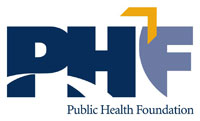Careers in the public health sector offer many different benefits and opportunities, and during even the most difficult of economic times, these careers allow for well paying salaries, job security, and an opportunity to proactively help the community. One such career is in associate biostatistics, and these types of public health professionals able to enjoy a rewarding career which allows them to grow and succeed
The demand for qualified associate biostatistics professionals is high, and this allows for prospective students looking to get into the field to feel confident that they will be able to achieve gainful employment upon graduation from a program. Becoming an associate biostatistics professional is just one career path in public health, but it is a path that can be very worth travelling down.
What Is An Associate Biostatistics Professional?
An associate biostatistics professional will provide technical expertise when needed as well a perform research duties and analyze data related to public health statistics. These types of public health professionals are typically very proficient in technology and various software applications, and they tasked with keeping track of patient data as it relates to public health hazards, trends, or concerns.
On an average day, an associate biostatistics professional, or associate biostatistician will:
- Provide statistical profiles on different patients or populations
- Attend meetings or conferences to discuss data with research or epidemiological teams
- Publish writings in peer-reviewed journals both locally and internationally
- Gather statistical reports from studies on different populations in relation to public health
- Interpret and presents study results in an easy to understand way to other members of a public health staff
- Analyzes problems that may arise in patient data
- Develop solutions to help to stop problems in patient data
- Develop and implements new research proposals used to gather data on populations in the future
- Contribute to overall operational planning on new projects or procedures
- Organize meetings with other groups or members of a public health team in order to present data analysis findings
- Maintain data analysis or collection records to keep track of a population over the long term
An associate biostatistics professional is normally in charge of the technological and data collection aspects of a public health team, and an associate biostatistician can work in a local community setting or with global populations abroad. Due to the different software and technological programs used by statistical biostatisticians, these types of public health workers should be naturally tech savvy with an eye for detail so they can identify and solve any problems related to collected patient data.
Education And Training
A PhD in biostatistics is typically required of an associate biostatistician, and this will mean attending 3 different levels of education after a high school diploma or GED is earned. The first level of education is that of a bachelor’s degree, and this can be earned by completing a 4 year undergraduate program. In order to become an associate biostatistician, a person will want to major in public health, computer science, or a related field so they may prepare for the master’s degree courses ahead.
After the bachelor’s degree is earned, the student will then go on to earn their master’s degree in public health, or MPH, or a master’s degree in biostatistics. A master’s degree program will typically last around 2 years and include an internship of around 1 year to allow students to gain hands on experience working alongside professional public health employees or biostatisticians.
A PhD or doctorate course in biostatistics will round out the education and training requirements, and these courses can last from 3 to 5 years depending on the program chosen. A PhD in biostatistics program will encompass various courses related to public health, biostatistics, technological courses, and any subjects involved with a specialized interest.
Post-graduate certification courses or exams may also be taken during the course of a person’s educational path to becoming an associate biostatistician, and these will allow a professional to become certified in a variety of specialized fields.
Demand for qualified associate biostatisticians is on a steep rise with need increasing by 27% by the year 2022, which is much faster than the average of 11% for all occupations. On average, the salary a person can expect from working as an associate biostatistics professional is around $75,560 per year.








